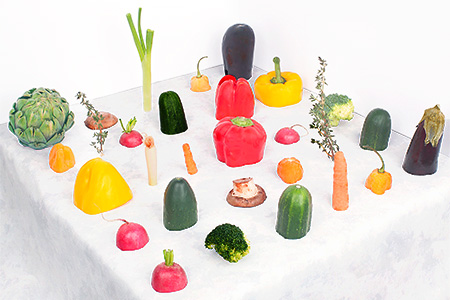A Truly Green Food Trend Takes Shape
by Natasha Wolff | February 19, 2015 9:47 am
Now that kale salad has achieved world domination, it can be easy to forget that not so long ago vegetables were mostly relegated to the sidelines, ninth-inning players in a game where meat got all the glory. Save for a few vegetarian restaurants and the all-veg tasting menus occasionally trotted out at fine-dining establishments, members of the plant kingdom were rendered as afterthoughts, the oft-overcooked accompaniments to artfully prepared animal parts.
Today, however, it’s a different story. Thanks to the farm-to-table[1] movement, Meatless Mondays and the dissolution of the traditional appetizer-entrée menu structure into one featuring plates of varying sizes, chefs are conjuring intricate, nuanced vegetable dishes that rival their meat-based counterparts in both complexity and price.
Consider the Proprietors Bar & Table in Nantucket, where a $15 order of king trumpet mushrooms is seared a la plancha and served with pickled turnip, cauliflower and sumac yogurt. At NoMad in New York City, roasted acorn squash with mustard greens and bread pudding costs a beefy $22. Even the otherwise meat-laden menu at San Francisco’s aptly named Game recently featured a paean to the carrot, serving the humble vegetable sous vide, slivered raw and pureed and strewn over an edible soil made of XO sauce. Later this year, Jean-Georges Vongerichten is opening an all-vegetable restaurant whose menu will be devoted to raw, vegan and vegetarian dishes.

Vegetables on display
“I don’t think you can pin the rise of the vegetable on any one reason, but never underestimate the fact that chefs are really competitive,” says Amanda Cohen, the chef-owner of Dirt Candy in Manhattan. She became one of the pioneers of the vegetable-based-cuisine movement when she opened her restaurant in 2008. Although Dirt Candy is expressly vegetarian, Cohen’s innovative preparations—like rosemary-eggplant tiramisu and broccoli hot dogs with salt-and-vinegar broccoli-rabe chips—inspired many diners and chefs to rethink their perceptions of vegetables.
Cohen remembers the time that she realized the tide was turning. “It was when two well-known restaurants swiped a couple of my recipes, passed them off as their own and received a lot of positive press for them,” she says. “I suddenly felt like other chefs were paying attention and trying to step up their vegetable game.”
At the Farm and Fisherman in Philadelphia, the menu’s best seller is the bloody beet steak, a roasted, flattened and seared beet served with yogurt, pan drippings, amaranth and balsamic vinegar. The $12 first course is so popular, says chef-owner Josh Lawler, that, “it even inspired a local artist to paint it in oil.”
The idea came from his days cooking at Blue Hill at Stone Barns, in upstate New York, where vegetables roasted under bricks developed a flattened texture and caramelized edges. When he opened his own restaurant, Lawler decided to try the same thing with beets. “When I noticed the beautiful and caramelized juices it produced, it really was something different than I have ever tasted,” he says. “I’m always trying to cook vegetables that are hearty and almost meat-like, with soul and depth. So why not cook the vegetables like a piece of meat?” Vegetables, he adds, “have moved into the forefront of my cooking. In the past it was, come up with a protein and then figure out what veggies are going to accompany it. Now I buy my vegetables first, then create my menu around them.”
For all the advances vegetables have made in restaurants, however, Cohen cautions that their proponents shouldn’t declare total victory. “They’ve finally been invited to prom, but they’re still not out on the dance floor,” she says. That said, she continues, “all the hype has gotten people used to the idea that cooking vegetables and cooking vegetarian food are two entirely different things. And that’s no small achievement.”
- farm-to-table: http://dujour.com/cities/hamptons/ruschmeyers-restaurant-the-smile-farm-to-table-menu/
Source URL: https://dujour.com/life/vegetable-restaurant-meals-vegetarian-food-trend/